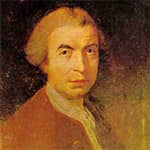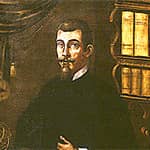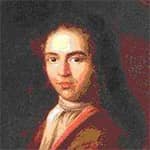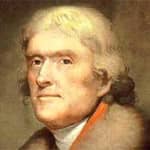In his lifetime a personality of high esteem in European circles, however, it was only the recent times that defined how he was ahead of his time and, in many things, a precursor of scientific achievements. Ruđer Bošković, one of the most famous Dubrovniker of all times, excelled with intellect, imagination and intuition with indelible traces in European history of science.
Dubrovnik Super Saver:
Cable Car Ride and Old Town Walking Tour plus City Walls
Discover the charm and history of Dubrovnik on this unforgettable journey. Explore the UNESCO World Heritage Site of Dubrovnik Old Town's narrow and winding streets, and admire the mesmerising views from the 16th-century city walls. Take your experience to new heights with a cable car ride to Mt. Srđ for panoramic views. Book your tour now with a knowledgeable expert.
Ruđer Bošković, one of the greatest scholars of his time, was born in Dubrovnik on May 18, 1711. At 14, after an education at the Jesuit college in Dubrovnik (Collegium Ragusinum), he went to Rome to pursue his studies with the Jesuits there. Before departing for France and England in 1759, a professor of Physics and Mathematics, he taught at the Jesuit schools in Fermo and Rome. At his most prolific years, he published some 40 treatises and prepared his most relevant works on natural philosophy. Some of his papers deal with issues on light, on the law of continuity, and on the laws of natural powers. Bošković also made his name when he measured the two meridian degrees in the Papal State by using apparatus and gauging he himself improved.
Travelling extensively throughout Europe, he stooped in Paris and Vienna, where he published his most important work on Philosophiae maturalis theoria redacta ad unicam legem virium in Natura existentium (known under a shorter title as A Theory of Natural Philosophy). In London he studied lunar and solar eclipses. A tempest prevented his ship from arriving in Istanbul from Venice in time to observe the passage of Venus by the Sun - disembarked at the islet of Tened, he studied the ruins of Troy instead. From Istanbul, having missed the desired experience of an unusual encounter of the planets, he set of to Bulgaria, then to Moldavia and then to Poland, the voyage minutely described in his diary.
In 1770 he moved to Milan to reach at the new department of astronomy and optics, but having failed the appointment to the director of the observatory in which he had invested his own money and time, disillusioned, he moved to Venice. Though away almost all his lifetime, Bošković never lost his links with Dubrovnik, maintained especially through a regular correspondence with his elder brother Baro and sister Anica. He never stopped to care for the welfare of his native town. And was always ready to answer requests by the Dubrovnik Senate and to assist in diplomatic and political issues. Reflecting upon a return home, yet incessantly busy, he went to Milan to prepare for the publication of his five-volume work "Pieces from Optics and Astronomy ", where he died in 1787.
Ruđer Bošković was not only a scholar, but, to the fashion of his time, a Latin poet too. His poetic versatility shines in De solis ac Lunae defectubis, describing abstract astronomic theories in easy-flowing, elegant hexameters. He was a fellow of the Roman Arcadia that published his poetry in its editions.
In his lifetime he was a personality of high esteem in European scientific circles. However, only recent times have defined just how much Bošković was ahead of his time and, in many things, a precursor of scientific achievements. Ruđer Bošković, one of the most famous Dubrovnikers of all times, excelled with an intellect, imagination and intuition that have left traces in the history of European science.
Source: Welcome to Dubrovnik l/I
Writen by: Jelka Tepšić
Published by: Dubrovnik Tourist Board
Famous citizens of Dubrovnik

Ruđer Bošković
While esteemed in European circles during his lifetime, only recently has it become clear that he was ahead of his time.
Read more: Ruđer Bošković

Marin Getaldić
Marin Getaldić's experiments with parabolic mirrors in the cave of St. James, also known as "Bete's cave" after his nickname.
Read more: Marin Getaldić

Marin Držić
Regarded as one of the most distinguished Renaissance playwrights and prose writers in Croatian literature.
Read more: Marin Držić

Luka Sorkočević
A composer from the Republic of Ragusa (Dubrovnik Republic), recognized as the first Croatian symphonist.
Read more: Luka Sorkočević
